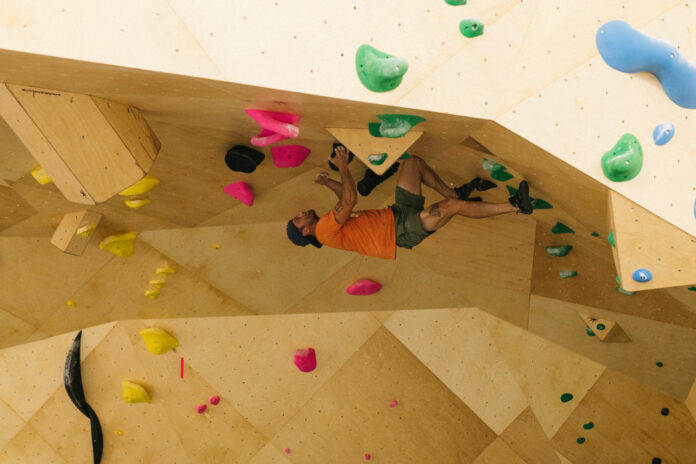We’ve talked about setting easier climbs and setting harder climbs, but what about setting climbs that are harder than you can climb? In this Ask a Setter, Louie Anderson offers some strategies for doing just that. As Anderson attests, it’s something every setter will have to do at some point during their setting career.
Got a routesetting question you’d like answered? See if we’ve covered it already in a past Ask a Setter, and then email us your question here.
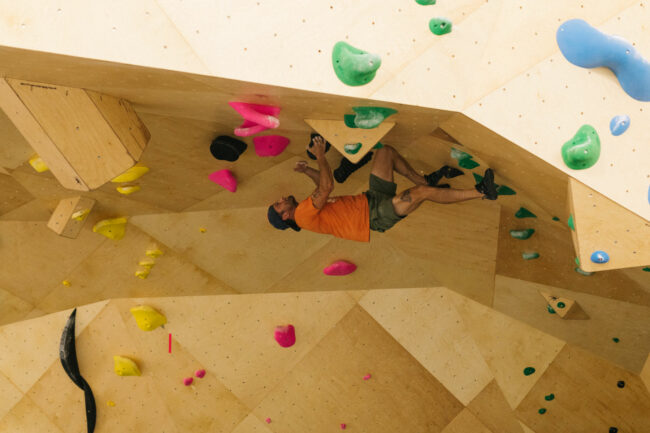
QUESTION: It seems like there is always someone who is climbing and setting harder than me, and I want to be able to set for climbers at all levels. What advice do you have for setting climbs that are harder than you can climb?
ANDERSON: Everyone will undoubtedly have a situation in their setting career where they are called upon to set something harder than their normal climbing level. There’s no need to be apprehensive about this challenge, as there are a few ways to approach the task that will help make the resulting climb the best it can be.
Start With What You Know
Slightly downsize hand and foot hold sizes from what you would normally use on a climb that’s at your personal limit. The same movement patterns set with harder-to-use holds will for sure get you a harder version of your climb. How much less positive the holds are that you select will equate to how much harder the final climb is than what you might normally set.
Aside from the positivity of the holds selected, you can also choose to play with the orientation of the hand and foot holds. Making things a little more directional, or moving them a little out of the optimum orientation for the proposed movement, is another great way to bump up the difficulty.
Finally, consider using less-supportive footholds, or moving them into a position that does not provide the same degree of opposition for the intended movement that they are paired with.
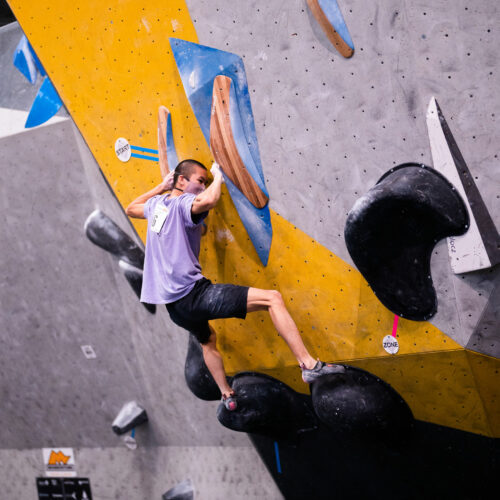
Repeated Crux Sequences
Sometimes harder climbs will have singular moves or sequences that make them more challenging to complete, but often the difficulty will come from a sustained series of moves and sequences instead. These latter challenges are perfect for someone like yourself who is trying to set harder climbs than you are used to.
When setting this type of climb, you can set a series of mini cruxes throughout the climb. Each of these crux sequences would be comparable to the single crux of something that you would normally set at the upper end of your own personal ability level. Once you have these sequences set, you need only ensure that there are feasible and logical transitions connecting them all. With more cruxes, your climb should be more likely to hit the target of an upper grade level.
Work With a Partner
Work with another setter who sets harder climbs to co-set the climb. Ask questions throughout the process when things don’t make sense or when you aren’t sure why certain things are being done. This is a great learning opportunity, when you still have a voice in what is being set.
Make sure that you aren’t a passive participant in this team effort, that you’re not just along for the ride. Unless you are actively suggesting holds and sequences and being a part of what is proposed to the climber, the benefits to your development as a setter will be greatly diminished.
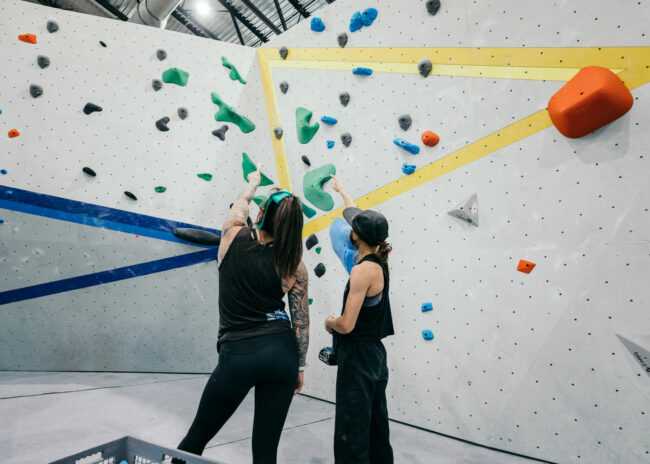
Visualize What Is Possible
What moves are you almost capable of doing? What harder moves do you see your friends succeeding on? Focus on trying to set these types of moves, or something similar to them, and see where you end up difficulty wise. Once you understand what is possible and likely, it’s usually just a matter of experimentation and tweaking to make it all work.
All of the setters who routinely set harder climbs start with an idea, and then they make adjustments until it works. Not many people throw holds on the wall and have it work on their first try with no modification. Accept the process, and don’t hold yourself to such a rigid expectation of success.
Forerunning
Every modern setting team should have a system in place to forerun what is put on the wall before it is released to the general public. Talk to your Head Setter and share with them your desire to set harder climbs than you might normally be assigned. Once you have an assignment, do your best to put something valuable on the wall, and then rely on your team and the forerunning process to make the tweaks necessary to get the climb where it needs to be. As with any collaborative effort, make sure you understand why tweaks are being made and how they affect the climbing in question. The more you can become an active participant, the more you will understand the principles involved, and hopefully the less tweaking of your climbs will be required in the future.
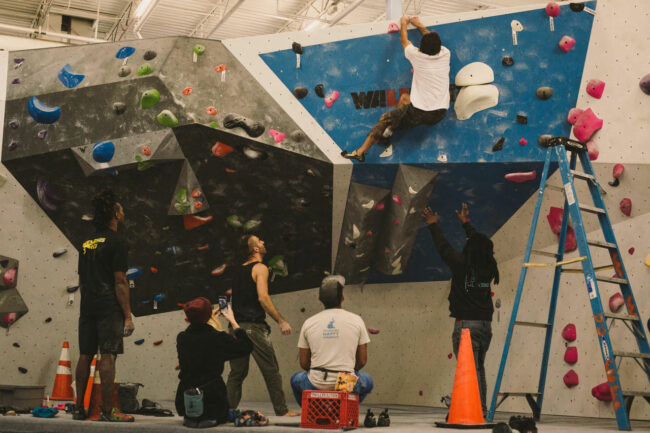
Sample Harder Climbs
Whether at your own gym or another facility, getting on harder climbs will help you realize how other setters are achieving certain grades. Be specific in your critiquing of the climbs you get on. How positive and what size of holds are they using? What kind of sequences do they demand? How sustained are they?
Once you have some first-hand examples to relate to, try to set your own version of (or a variation of) that climb on your walls and see what kind of success you achieve.
Be Honest With Yourself
Finally, be honest with yourself regarding your strengths and weaknesses. Ask yourself why you can’t do the climb. If it’s just a lack of flexibility, body tension, finger strength, etc., and that is an area of weakness for you, then it’s likely that someone stronger in those areas could succeed on the climb.
Conversely, if the style matches your strengths and you still can’t do the moves, it might be harder than you think for people without your strengths (even if they climb at a higher level).
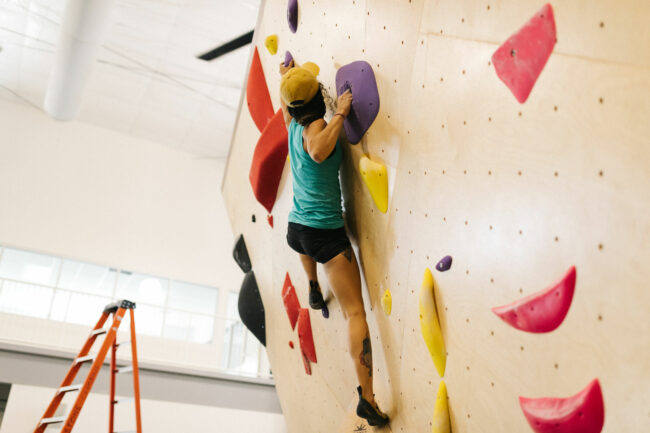
There is often a very fine line when setting outside your range, and it’s very easy to cross it. The more you practice finding the right balance, the more you will become aware and comfortable with what the moves should feel like, even if you can’t personally do them.
As I said in the beginning, don’t be afraid of the opportunity to push your setting levels. It’s a chance to see what you’re capable of, to learn some new tricks, and to gain confidence in your overall abilities. Throw yourself out there and see what you can do. Like any other new pursuit, seek out feedback from trusted peers: How well did you hit the grade? What did they like about your setting? In what ways could you improve or better hit the target grade?
Routesetters around the world set outside their comfort zone on a regular basis―there is absolutely no reason that you can’t do the same with consistent success.

Louie Anderson has been climbing since 1974 and routesetting for over 35 years. He’s a big proponent for education in the setting world, having written The Art of Coursesetting (re-released as Fundamentals of Routesetting). Anderson has also been shaping holds and consulting for gyms for decades. His holds are available at Legacy Ascension, and more information about his services is at louieandersonclimbing.com.
Listen to our podcast with Louie: Revitalizing Routesetting for the Next Generation



